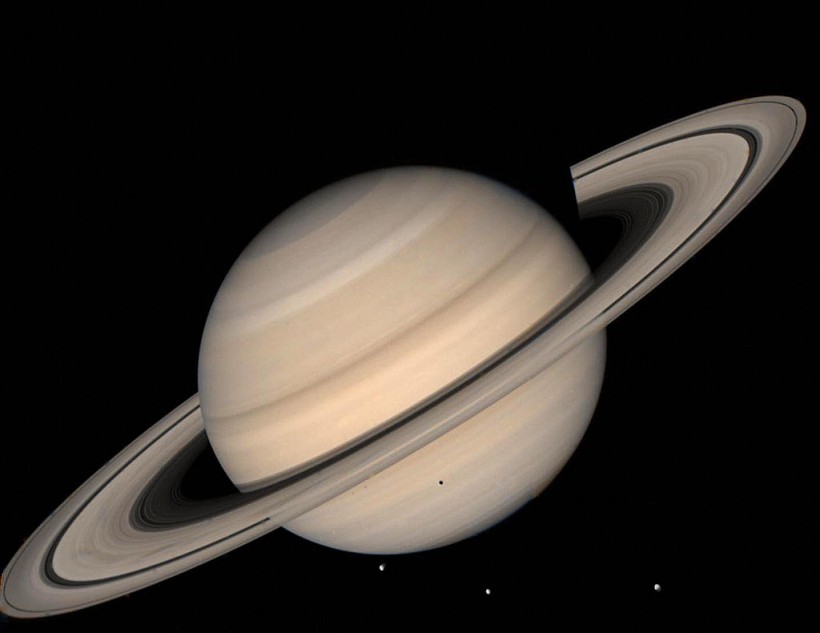NASA will launch the highly awaited Dragonfly expedition to Titan, Saturn's largest moon, in June 2027. By 2034, the 450 kg (990 lbs) nuclear-powered quadcopter will land in the Selk crater area and begin exploring Titan's surface and atmosphere to learn more about this satellite.
The voyage will primarily examine the organic environment, active methane cycle, and moon's prebiotic chemistry, as Universe Today reported. These goals help Dragonfly achieve its main purpose of finding evidence of possible life on Titan.
Cassini's Radar Images Revealed
The resolution of the radar pictures from Cassini is around 300 meters per pixel, or the size of a football field. According to study lead author Léa Bonnefey, the team has only explored less than 10% of the surface, and there are still more little rivers and landscapes for them to explore.
Over its circuits of Saturn, the Cassini spacecraft took multiple radar images of Titan and its other larger moons. The orbiter's auxiliary mission, the Huygens lander, was launched on Christmas Day 2004 and began its ascent into Titan's thick atmosphere on January 14.
During its two-hour descent, the lander gathered data on Titan's atmosphere to identify its aerosols and molecules. According to Universe Today, river valleys not visible in the orbiter's radar scans may also be seen in the surface images it returned.
Nearly four times as dense as Earth's atmosphere, Titan's atmosphere is mostly made up of nitrogen (about 95%), methane (about 5%), and other hydrocarbons.
Titan has a gravity of 13.8 percent that of Earth, thus Dragonfly will be able to stay in the air and do drone-like activities while examining Titan's atmosphere, surface, and methane lakes to learn more about the composition of the planet and whether there is any evidence of life.

SPACE, SPACE: This August 1998 NASA file image shows a true color photo of Saturn assembled from Voyager 2 spacecraft. Three of Saturn's moons L-R: Tethys, 1,050 km. (652 mi.) in diameter; Dione, 1,120 km. (696 mi.); and Rhea, 1,530 km. (951 mi.) are seen in the image. The shadow of Tethys appears on Saturn's southern hemisphere. NASA announced on 17 August 2004 that the Cassini-Huygens space probe discovered two new moons around Saturn, which could be the smallest ever spotted around the ringed planet, NASA officials said Tuesday. The moons, measuring three and four kilometers (about two miles) in diameter, are located 194,000 and 211,000 kilometers (120,500 and 131,000 miles), respectively, from Saturn. They have been temporarily named S/2004 S1 and S/2004 S2.
ALSO READ: Saturn's Missing Moon Chrysalis Is the Reason Why the Planet is Spinning at a Tilt
'Life' on Titan
Since Titan seems to contain all the necessary components for a livable environment, scientists have long suggested that there may be living there. Since the Cassini-Huygens mission spent 13 years between 2004 and 2017 studying Saturn and its moons, this speculative activity has grown significantly.
But now, a team of Cornell researchers, where Bonnefoy led the study, assembled and reviewed radar images acquired by Cassini to determine the properties of the surface. The map accurately depicts the Dragonfly's landing spot, characterized by dunes and partially thawed frozen terrain.
Alex Hayes, an associate professor of astronomy and the director of the Spacecraft Planetary Image Facility, also helped the research team focus on finding and identifying possible livable habitats throughout the Solar System.
"Dragonfly - the first flying machine for a world in the outer solar system - is going to a scientifically remarkable area," said Bonnefoy in a statement.
RELATED ARTICLE: Saturn's Moon Enceladus' Phosphorus Discovery Offers Evidence of Potential Extraterrestrial Life
Check out more news and information on Space in Science Times.














